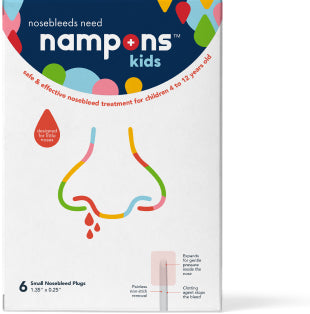Nosebleeds are a common occurrence in sports like boxing and MMA. The nose makes for a big target and a skilled puncher will seek to pummel the appendage until it breaks or bleeds, thus getting some points on the scoreboard and hindering their opponent in the process.
But why do some inexperienced boxers suffer more nosebleeds than the pros, what can they do about it, and is a bleeding nose indicative of a serious problem?
Problems with Nosebleeds in Boxing and MMA
Cuts and bruises are common in combat sports and the nose is often the first body part to break.
Generally, a nosebleed won’t cause many issues for the fighter. Providing they are not taking any blood-thinning medications, have a nutritionally balanced diet, and don’t have high blood pressure, the bleeding should be minimal and likely won’t hinder their performance.
If the bleeding is heavy, or the nose breaks, it is a different story.
When you have a nosebleed, experts recommend that you sit up straight, lean forward, and pinch your nose for 5 to 10 minutes. It ensures that the blood does not pool in your throat or stomach and doesn’t impede your breathing.
But fighters can’t do any of that. They have to remain on their feet and keep swinging those punches. If the bleeding is heavy and begins to impact their breathing, their stamina will drain and they’ll be a sitting duck, just waiting for the finishing blow.
Heavy blood loss will also catch the attention of the referee and ringside doctor, and if they believe that the damage is too great, they may stop the fight. It’s rare for this to happen with bleeding or broken noses, however.
Heavyweight Anthony Joshua suffered a broken nose in his fight against Carlos Takam (caused by a headbutt, as opposed to a punch) and he was able to hold his nerve and claim victory following a TKO in the 10th. It did make the fight much harder for him though.
Is it Serious?
Brain injuries and fatalities can and do occur in combat sports, but it may surprise you to learn that they are more common in boxing than they are in MMA.
MMA fighters use thinner padding on their gloves and often land and receive far fewer punches over the course of the fight. More importantly, when they get “rocked” by a heavy punch and hit the canvas, the fight stops, and they are given the necessary treatment.
In boxing, they have time to pull themselves around, return to their feet, and expose themselves once again.
Traumatic brain injury can occur in both sports, though, and it’s not always easy to spot.
Nosebleeds can indicate that the fighter has received damage, but rarely does it hint at anything serious. In fact, brain damage doesn’t always have clear and obvious signs and referees are trained to look out for boxers who appear confused, distant, wobbly/unstable, and are unable to defend themselves.
Why Do Some Fighters Experience More Nosebleeds?
Peruse any boxing forum and you’ll see a deluge of comments from inexperienced boxers wondering why their noses keep bleeding and what they can do to prevent it.
They complain that they suffer a bleed every time they take a punch and are frustrated at how messy the fight becomes. They’re also worried that the fight will be stopped due to the blood and perceived damage.
The good news is that this is usually temporary and it’s rarely as bad as it seems. Experienced referees and trainers understand that nosebleeds are common in young fighters and will rarely stop a fight or sparring session for a little blood.
As you put in more rounds and suffer more nosebleeds, you will eventually discover that your nose stops bleeding as easily.
Some boxers still suffer more than others, and those with hooked or protruding noses seem to be more susceptible, but it’s just one of those things and a good cut-man knows how to deal with it.
How to Stop Bleeding in a Fight
In-between rounds, cut-men will treat nosebleeds using a combination of cotton and pressure. They don’t have a lot of time to waste but are incredibly adept at treating the wound and preventing it from causing any problems to the fighter.
The heavy the damage is, the more complicated this procedure becomes, but there are ways of dealing with every injury.
It’s a similar principle used in the creation of Nampons. These cotton swabs naturally expand in the nose to create a blockage and they contain a clotting agent to stop the bleeding. They might not be quick enough to fix a bloodied nose in-between rounds, but they can certainly help after the final bell or following a few rounds of sparring.
Cold presses are also used to reduce swelling and every good cut-man has copious amounts of petroleum jelly to hand. Also known by the brand name Vaseline, this substance creates a protective waterproof layer over the skin. It’s incredibly effective for reducing damage and sealing minor abrasions and can also be applied in and around the nose for much the same purpose.



